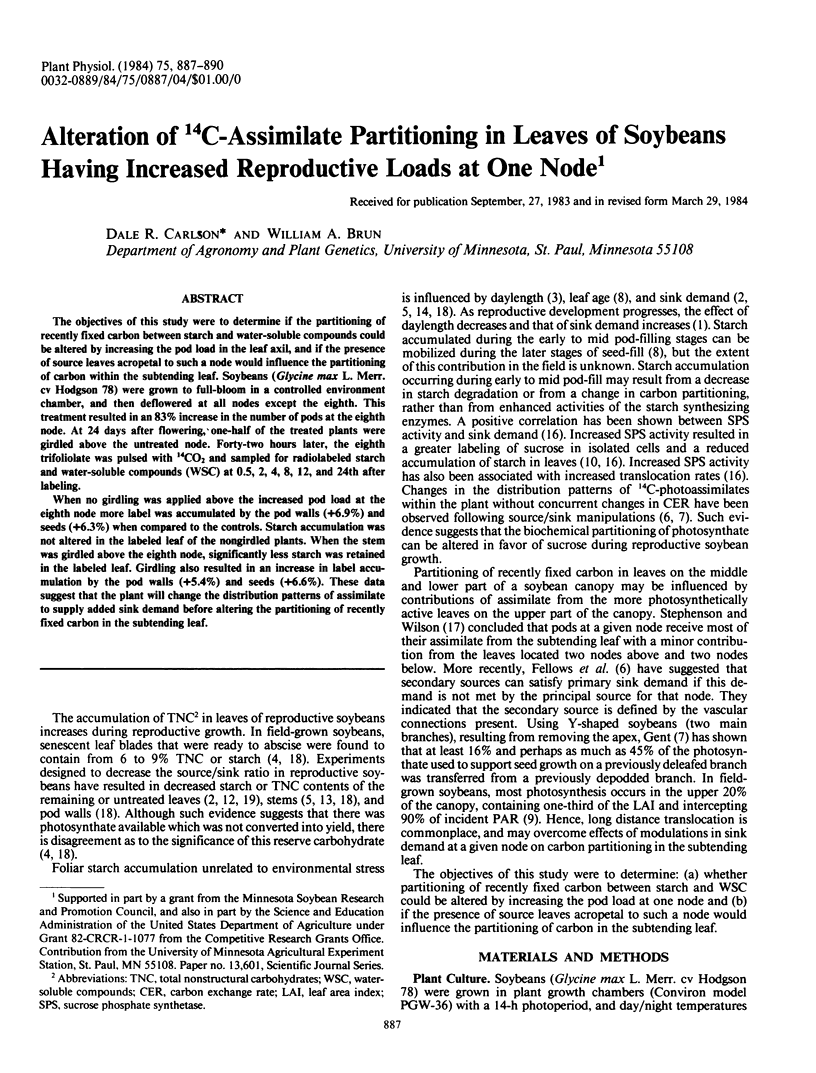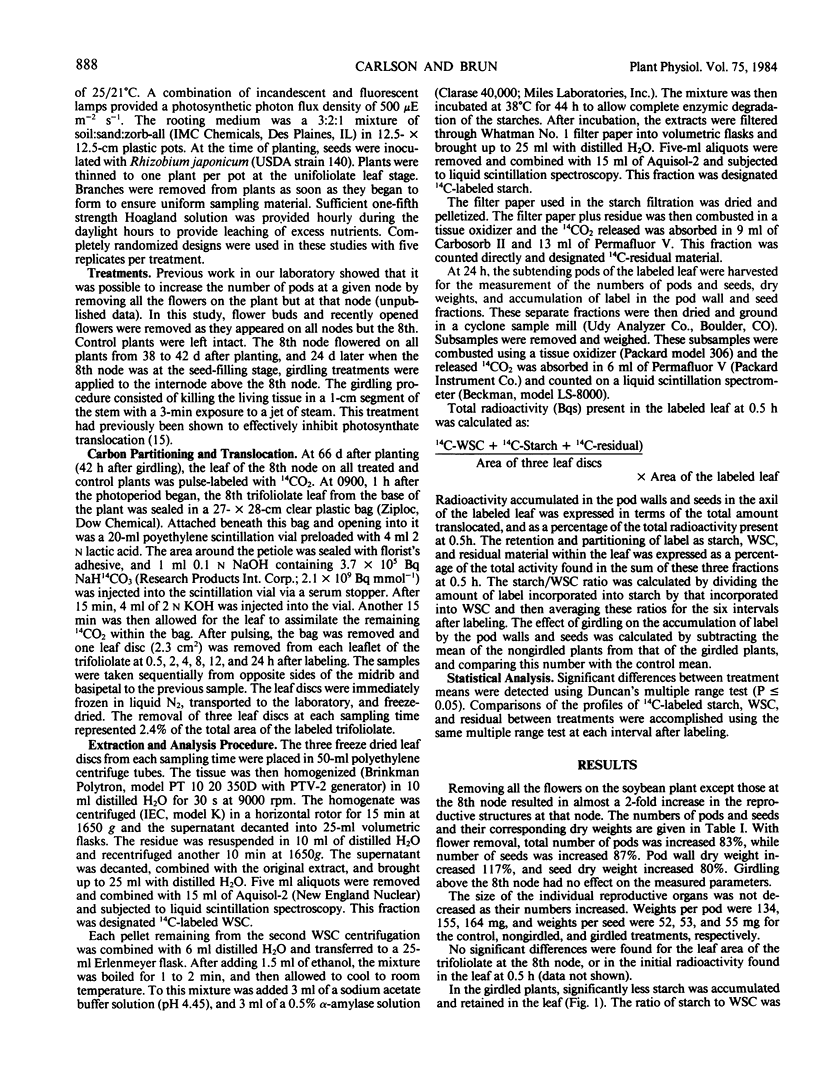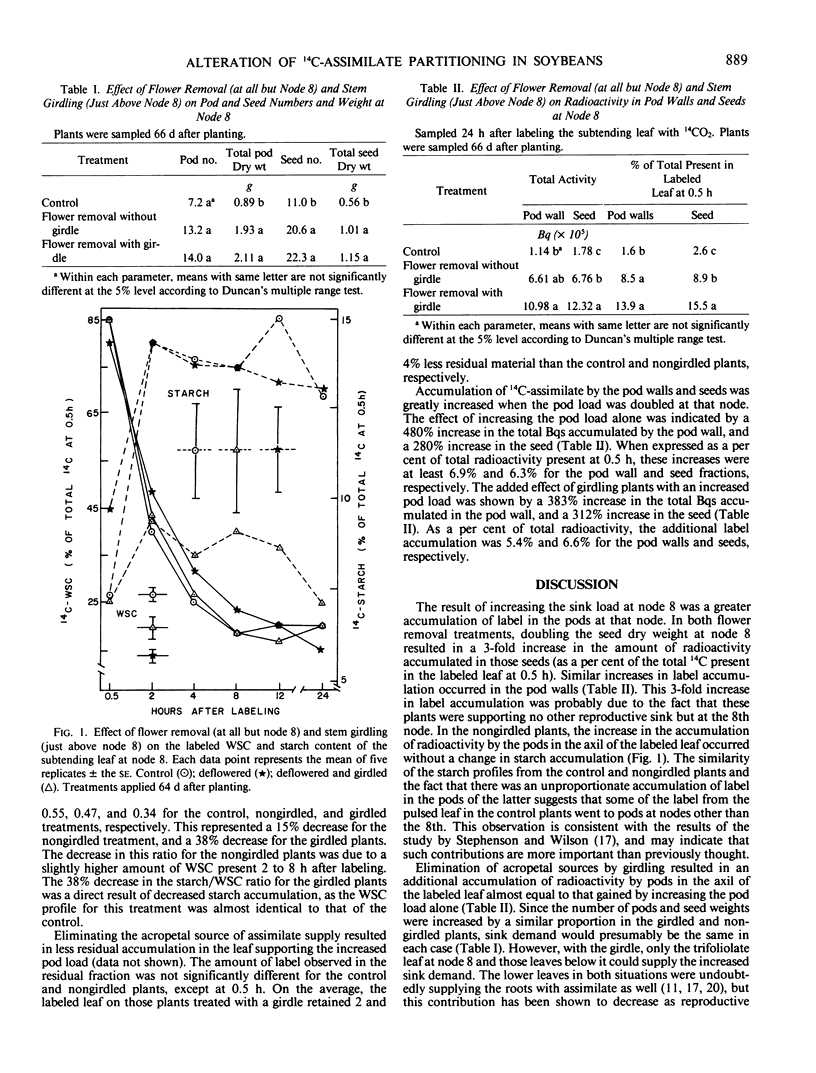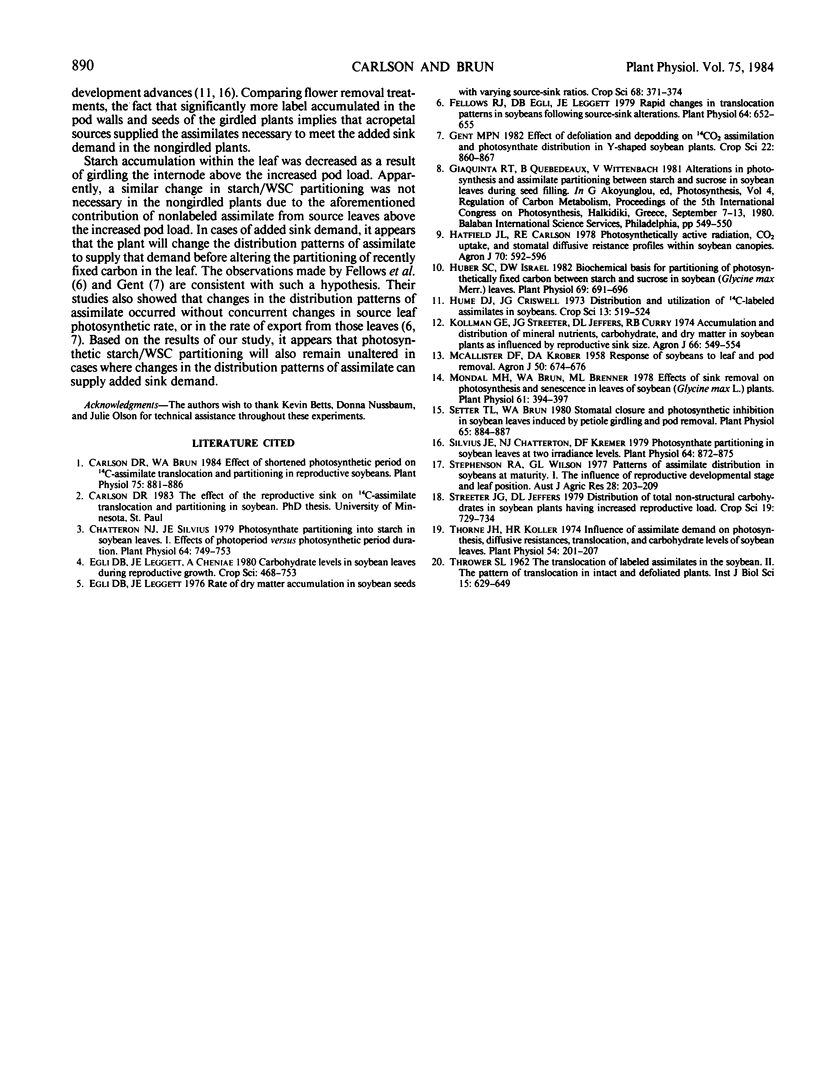Abstract
The objectives of this study were to determine if the partitioning of recently fixed carbon between starch and water-soluble compounds could be altered by increasing the pod load in the leaf axil, and if the presence of source leaves acropetal to such a node would influence the partitioning of carbon within the subtending leaf. Soybeans (Glycine max L. Merr. cv Hodgson 78) were grown to full-bloom in a controlled environment chamber, and then deflowered at all nodes except the eighth. This treatment resulted in an 83% increase in the number of pods at the eighth node. At 24 days after flowering, one-half of the treated plants were girdled above the untreated node. Forty-two hours later, the eighth trifoliolate was pulsed with 14CO2 and sampled for radiolabeled starch and water-soluble compounds (WSC) at 0.5, 2, 4, 8, 12, and 24th after labeling.
When no girdling was applied above the increased pod load at the eighth node more label was accumulated by the pod walls (+6.9%) and seeds (+6.3%) when compared to the controls. Starch accumulation was not altered in the labeled leaf of the nongirdled plants. When the stem was girdled above the eighth node, significantly less starch was retained in the labeled leaf. Girdling also resulted in an increase in label accumulation by the pod walls (+5.4%) and seeds (+6.6%). These data suggest that the plant will change the distribution patterns of assimilate to supply added sink demand before altering the partitioning of recently fixed carbon in the subtending leaf.
Full text
PDF



Selected References
These references are in PubMed. This may not be the complete list of references from this article.
- Carlson D. R., Brun W. A. Effect of shortened photosynthetic period on C-assimilate translocation and partitioning in reproductive soyeans. Plant Physiol. 1984 Aug;75(4):881–886. doi: 10.1104/pp.75.4.881. [DOI] [PMC free article] [PubMed] [Google Scholar]
- Chatterton N. J., Silvius J. E. Photosynthate Partitioning into Starch in Soybean Leaves: I. Effects of Photoperiod versus Photosynthetic Period Duration. Plant Physiol. 1979 Nov;64(5):749–753. doi: 10.1104/pp.64.5.749. [DOI] [PMC free article] [PubMed] [Google Scholar]
- Fellows R. J., Egli D. B., Leggett J. E. Rapid Changes in Translocation Patterns in Soybeans following Source-Sink Alterations. Plant Physiol. 1979 Oct;64(4):652–655. doi: 10.1104/pp.64.4.652. [DOI] [PMC free article] [PubMed] [Google Scholar]
- Huber S. C., Israel D. W. Biochemical Basis for Partitioning of Photosynthetically Fixed Carbon between Starch and Sucrose in Soybean (Glycine max Merr.) Leaves. Plant Physiol. 1982 Mar;69(3):691–696. doi: 10.1104/pp.69.3.691. [DOI] [PMC free article] [PubMed] [Google Scholar]
- Mondal M. H., Brun W. A., Brenner M. L. Effects of Sink Removal on Photosynthesis and Senescence in Leaves of Soybean (Glycine max L.) Plants. Plant Physiol. 1978 Mar;61(3):394–397. doi: 10.1104/pp.61.3.394. [DOI] [PMC free article] [PubMed] [Google Scholar]
- Setter T. L., Brun W. A. Stomatal closure and photosynthetic inhibition in soybean leaves induced by petiole girdling and pod removal. Plant Physiol. 1980 May;65(5):884–887. doi: 10.1104/pp.65.5.884. [DOI] [PMC free article] [PubMed] [Google Scholar]
- Silvius J. E., Chatterton N. J., Kremer D. F. Photosynthate partitioning in soybean leaves at two irradiance levels: comparative responses of acclimated and unacclimated leaves. Plant Physiol. 1979 Nov;64(5):872–875. doi: 10.1104/pp.64.5.872. [DOI] [PMC free article] [PubMed] [Google Scholar]
- Thorne J. H., Koller H. R. Influence of assimilate demand on photosynthesis, diffusive resistances, translocation, and carbohydrate levels of soybean leaves. Plant Physiol. 1974 Aug;54(2):201–207. doi: 10.1104/pp.54.2.201. [DOI] [PMC free article] [PubMed] [Google Scholar]


